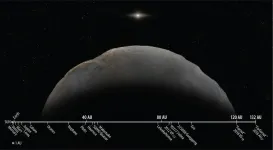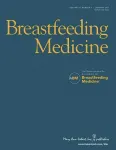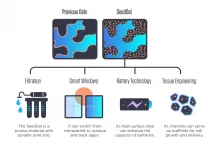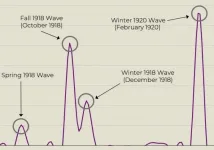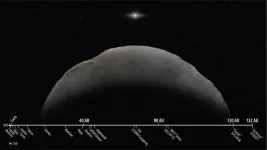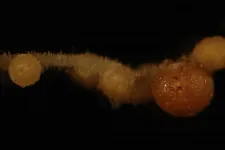(Press-News.org) A team, including an astronomer from the University of Hawai?i Institute for Astronomy (IfA), have confirmed a planetoid that is almost four times farther from the Sun than Pluto, making it the most distant object ever observed in our solar system. The planetoid, nicknamed "Farfarout," was first detected in 2018, and the team has now collected enough observations to pin down the orbit. The Minor Planet Center has now given it the official designation of 2018 AG37.
Farfarout's name distinguished it from the previous record holder "Farout," found by the same team of astronomers in 2018. The team includes UH Mānoa's David Tholen, Scott S. Sheppard of the Carnegie Institution for Science, and Chad Trujillo of Northern Arizona University, who have an ongoing survey to map the outer solar system beyond Pluto.
Journey around the Sun
Farfarout's current distance from the Sun is 132 astronomical units (au); 1 au is the distance between the Earth and Sun. For comparison, Pluto is only 34 au from the Sun. The newly discovered object has a very elongated orbit that takes it out to 175 au at its most distant, and inside the orbit of Neptune, to around 27 au, when it is closest to the Sun.
Farfarout's journey around the Sun takes about a thousand years, crossing the giant planet Neptune's orbit every time. This means Farfarout has probably experienced strong
gravitational interactions with Neptune over the age of the solar system, and is the reason why it has such a large and elongated orbit.
"A single orbit of Farfarout around the Sun takes a millennium," said Tholen. "Because of this long orbital period, it moves very slowly across the sky, requiring several years of observations to precisely determine its trajectory."
Discovered on Maunakea
Farfarout will be given an official name after its orbit is better determined over the next few years. It was discovered at the Subaru 8-meter telescope located atop Maunakea in
Hawai?i, and recovered using the Gemini North and Magellan telescopes in
the past few years to determine its orbit based on its slow motion across the sky.
Farfarout is very faint, and based on its brightness and distance from the Sun, the team estimates its size to be about 400 km across, putting it on the low end of being a dwarf planet, assuming it is an ice-rich object.
"The discovery of Farfarout shows our increasing ability to map the outer solar system and observe farther and farther towards the fringes of our solar system," said Sheppard. "Only with the advancements in the last few years of large digital cameras on very large telescopes has it been possible to efficiently discover very distant objects like Farfarout. Even though some of these distant objects are quite large, being dwarf planet in size, they are very faint because of their extreme distances from the Sun. Farfarout is just the tip of the iceberg of solar system objects in the very distant solar system."
Interacting with Neptune
Because Neptune strongly interacts with Farfarout, its orbit and movement cannot be used to determine if there is another unknown massive planet in the very distant solar system, since these interactions dominate Farfarout's orbital dynamics. Only those objects whose orbits stay in the very distant solar system, well beyond Neptune's gravitational influence, can be used to probe for signs of an unknown massive planet. These include Sedna and 2012 VP113, which, although they are currently closer to the Sun than Farfarout (at around 80 au), they never approach Neptune and thus would be most influenced by the possible Planet X instead.
"Farfarout's orbital dynamics can help us understand how Neptune formed and evolved, as Farfarout was likely thrown into the outer solar system by getting too close to Neptune in the distant past," said Trujillo. "Farfarout will likely interact with Neptune again since their orbits continue to intersect."
INFORMATION:
The United States spends more than $200 billion every year in efforts to treat and manage mental health. The onset of the coronavirus pandemic has only deepened the chasm for those experiencing symptoms of depression or anxiety. This breach has also widened, affecting more people.
New research from Carnegie Mellon University, University of Pittsburgh and University of California, San Diego found that 61% of surveyed university students were at risk of clinical depression, a value twice the rate prior to the pandemic. This rise in depression came alongside dramatic shifts in lifestyle habits.
The study documents dramatic changes in physical activity, sleep and time use at the onset ...
UNIVERSITY PARK, Pa. -- The descriptions on the fronts of infant and toddler food packages may not accurately reflect the actual ingredient amounts, according to new research. The team found that vegetables in the U.S. Department of Agriculture's "dark green" category were very likely to appear in the product name, but their average order in the ingredient list was close to fourth. In contrast, juice and juice concentrates that came earlier on the ingredient list were less likely to appear in product names.
"Early experiences with food can mold children's preferences and contribute to building healthful, or unhealthful, eating habits that last a lifetime," said author Alyssa Bakke, staff sensory scientist, Penn State. "Our previous work found combining ...
New Rochelle, NY, February 10, 2021--It may be safe for COVID-infected mothers to maintain contact with their babies. Keeping them apart can cause maternal distress and have a negative effect on exclusive breastfeeding later in infancy, according to The COVID Mothers Study published in the peer-reviewed journal Breastfeeding Medicine. Click here to read the article now.
In this worldwide study, infants who did not directly breastfeed, experience skin-to-skin care, or who did not room-in within arms' reach of their mothers were less likely to be exclusively breastfed in the first 3 months of life. Nearly 60% of ...
Oil and water may not mix, but adding the right nanoparticles to the recipe can convert these two immiscible fluids into an exotic gel with uses ranging from batteries to water filters to tint-changing smart windows. A new approach to creating this unusual class of soft materials could carry them out of the laboratory and into the marketplace.
Scientists at the National Institute of Standards and Technology (NIST) and the University of Delaware have found what appears to be a better way to create these gels, which have been an area of intense research focus for more than a decade. ...
SAN ANTONIO -- Humans possess a formidable multi-layered defense system that protects us against viral infections. Better understanding of these defenses and the tricks that viruses use to evade them could open novel avenues for treating viral infections and possibly other diseases.
For example, a human protein called SAMHD1 impedes replication of the human immunodeficiency virus (HIV) and other viruses by depleting deoxynucleotides -- building blocks needed for the replication of the viral genome. It has long remained a mystery whether and how this protein is activated in response to infection.
Now researchers from The University of Texas Health Science Center at San Antonio (UT Health San Antonio) have discovered that SAMHD1 recognizes a unique molecular ...
Sawfish have disappeared from half of the world's coastal waters and the distinctive shark-like rays face complete extinction due to overfishing, according to END ...
EAST LANSING, Mich. - The 1918 influenza pandemic provides a cautionary tale for what the future may hold for COVID-19, says a Michigan State University researcher.
After a decade studying a flu virus that killed approximately 15,000 Michigan residents, Siddharth Chandra, a professor in MSU's James Madison College, saw his research come to life as he watched the spread of the COVID-19 pandemic.
"It was so surreal," said Chandra, who has a courtesy appointment in epidemiology and biostatistics. "All of a sudden, I was living my research."
Chandra's research is published in the American Journal of Public Health with co-authors Julia Christensen, a graduate of James Madison College; Madhur Chandra, Senior ...
A team of astronomers, including associate professor Chad Trujillo of Northern Arizona University's Department of Astronomy and Planetary Science, have confirmed a planetoid that is almost four times farther from the Sun than Pluto, making it the most distant object ever observed in our solar system. The planetoid, which has been nicknamed "Farfarout," was first detected in 2018, and the team has now collected enough observations to pin down its orbit. The Minor Planet Center has now given it the official designation of 2018 AG37.
Farfarout's nickname distinguished it from the previous record holder "Farout," found by the same team of astronomers ...
Orange, Calif. - The mutually beneficial relationship between legumes and rhizobia, the nitrogen-fixing soil bacteria that make their home in legume root nodules and create nutrient-rich fertilizer for them, is one of the most well-known and agronomically important examples of symbiosis. New research from END ...
Individual choices in medicine carry a certain amount of uncertainty.
An innovative partnership at The University of Texas at Austin takes aim at medicine down to the individual level by applying state-of-the-art computation to medical care.
"Medicine in its essence is decision-making under uncertainty, decisions about tests and treatments," said Radek Bukowski, MD, PhD, professor and associate chair of Investigation and Discovery in the Department of Women's Health at Dell Medical School at UT Austin.
"The human body and the healthcare system are complex systems made of ...
